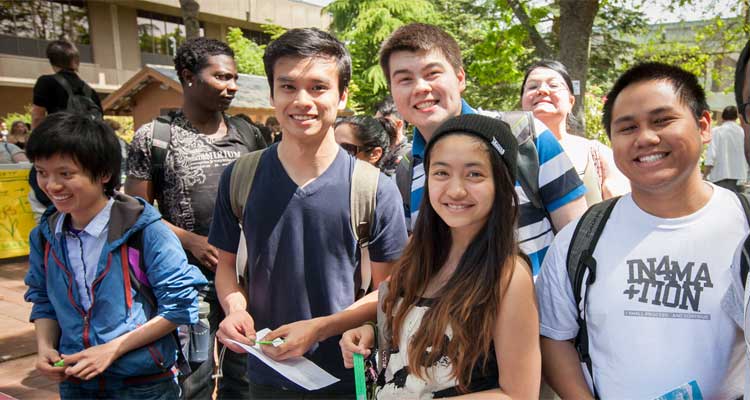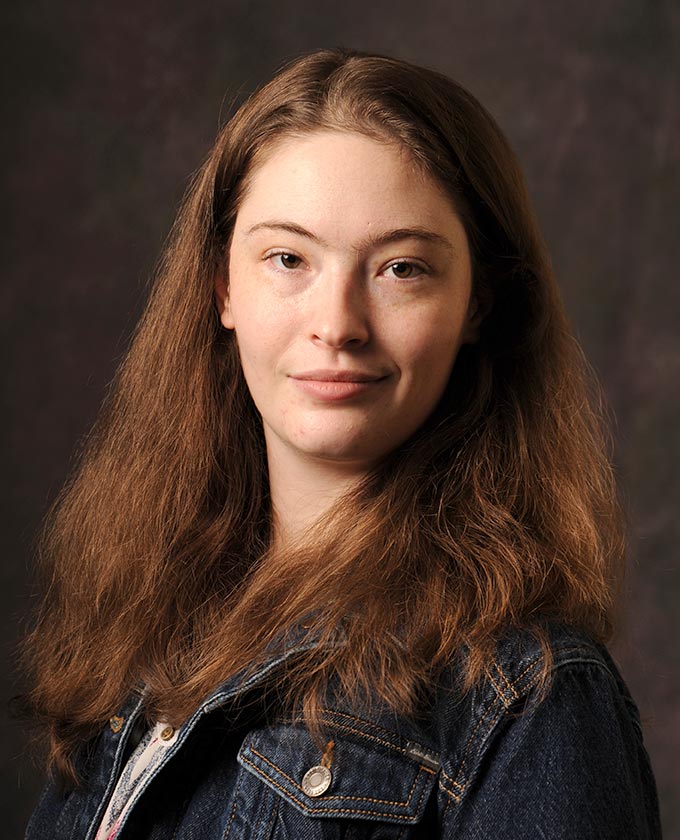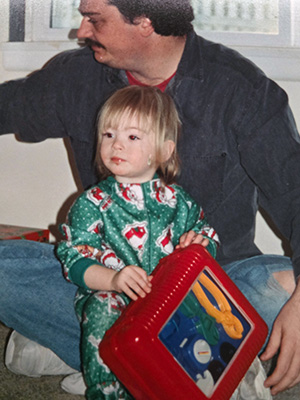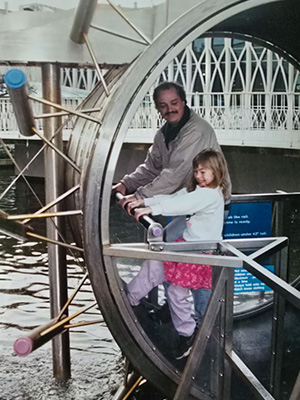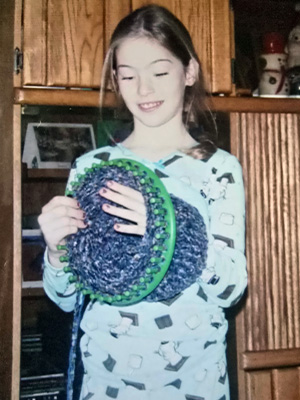On Dec. 30, 2024, “The Wall Street Journal” released a feature story titled, It’s the Most Indispensable Machine in the World—and It Depends on This Woman.
AMSL is the company that houses the machine. This $170 million extreme ultraviolet lithography machine produces the most advanced microchips on the planet for use in phones, computers, tablets, TVs, cars, and more, and is indispensable to the global economy. The woman behind that machine just happens to be an Edmonds College graduate – Brienna Hall.
Since January of 2023, Hall has worked behind the scenes, anonymously making sure the extreme ultraviolet lithography machine runs smoothly. Her job is part engineer, part “fancy mechanic” and full-time watch guard to a machine that has more than 100,000 unique parts.
Hall grew up in Seattle and landed at Edmonds College after graduating from Garfield High School and spending four-years as a nanny. After earning her Associate of Science at Edmonds, she transferred to Washington State University, where she majored in materials science and engineering.
Hall is the keynote speaker at the commencement ceremony for Edmonds College on June 20. She recently reflected on her academic and professional journey describing her 15 minutes of fame after being featured in “The Wall Street Journal.”
Question: Were there signs from your childhood that foreshadowed that you were destined for an engineering career?
Brienna Hall: I've always loved puzzles, figuring stuff out, and tying and untying knots. Out of my entire Girl Scout group, I was the one who was building things the entire time. I was someone who had the Legos and the K'nex set. Between the article coming out and now, I had one of my childhood friends text me, and she recalled the shared memory of us just sitting on the floor building K’nex sets and skipping meals because we both loved that stuff.
My dad was an electrical engineer for Seattle City Light. I am the oldest of two sisters, so my dad took me along when he needed a flashlight. I've always been interested in maintaining and fixing things.
Q: Was there a particular moment or a spark that ignited you during your time at Edmonds College that led you to where you are today?
Brienna: I attribute a few different things to sparking my love of engineering or putting me down this path. One is getting a job in the engineering department as a lab tech. A big part of my engineering job was maintaining the engines that the Engineering 100 course uses and the 3D printers in the facility. That is directly related to my current job – maintaining machinery.
The engineering department used 18 Briggs & Stratton engines for the Engineering 111 class. Part of that class was to disassemble and reassemble the engine while taking some measurements to calculate the power of the engine. At the end of the project, you're expected to have a working engine, so part of my job was helping the teachers and the students through that process.
At the end of those projects every quarter, I would fully disassemble and reassemble the engines the students used before the next quarter to ensure that they put everything back correctly. Just because it works doesn't mean it will keep working. It was an interesting process as there were a couple of different points at which one little part out of place would cause the engine to seize, so I just had to ensure those parts were in the correct place.
Back then, it felt like a meticulous and detail-oriented position. But knowing what I know now about the tolerance for error that my current machines have, it's not nearly as meticulous and detail-oriented. As outlined in “The Wall Street Journal” article, in my machine, hitting the wafer with light is tantamount to hitting a ping-pong ball on the moon with a laser. So, taking care of a couple of small engines is not quite the same, but it definitely set me up for success in my career.
Q: Did you have any favorite classes at Edmonds?
Brienna: I loved the materials science class. That made me change my major from civil engineering to materials science. That was super fun because not only did we learn the underlying reason why materials are the way they are, like why polymers are polymers, why metals are metals, etc, but we also got to go into the lab in Monroe Hall and play with them. We made polymers. We did tensile testing. It was super fun. I had Tucker Howie for that class; he was a great instructor. My brain and my learning style vibed with his teaching style.
Q: While at Edmonds, you helped start the Rocketry Club and eventually served as president. How did that develop?
Brienna: In the first quarter I was there, my professor for Engineering 100 wanted to get a rocketry program going. That became a big project for me. I sat down with him and said, “Hey, I'm interested. I don't want to be president or anything, but I'll fill out paperwork for people.” I know that can be a barrier for engineers; they don't like paperwork, and I'm okay with that. He eventually just announced, “Here's our president of the rocketry program, Brie.” So I just took it and ran with it.
Q: Besides your instructors, who supported your aspirations on campus?
Brienna: The whole STEM department was influential. Su Nelson wasn’t one of my engineering instructors, but she taught me about the next steps after college, like how to transfer my education into a lucrative career, and gave me other advice.
I spent a lot of time in the chemistry department, as it was just me and Caroline Mann in the office during COVID. We had a lot of conversations. And then Carey Schroyer (head of STEM), any time I took a proposal for rocketry to her, at the very least, she gave me advice on how to improve it.
Q: You have a very complex job, and “The Wall Street Journal” did a great job breaking it down. But, in the simplest terms, what is your job?
Brienna: In the simplest terms possible, I fix machines. Calling myself a “fancy mechanic” really does cover it. It is a lot like – and maybe I'm just basing this on my previous experience – but it is much like what I did at Edmonds—fixing engines. You figure out the problem and you fix it. I just wear a huge suit to do it and have to be familiar with over 100,000 unique parts in the machine. One of the most common pieces of feedback from my coworkers about the article is that they now have an easy way to explain to their families what they do. It is an excellent resource if you want to know what I do.
The Boise site is one of the smaller ones in the US. My team has around 20 people. It includes first-line responders and second-line responders. The first responder’s role is to be the first ones out there, trying to get the machine back up after it goes down. I'm currently part of the second line, which is more troubleshooting behind them. I am just trying to solve the problem and give the first line the tools to fix it.
Q: What is a typical day at work like for you?
Brienna: I usually start my day by looking at the machines to see if there are any red flags in the key performance indicators (KPIs). These are numbers we watch to see if a machine is performing well. If I see any red flags in that data, I will create a plan to fix it. And then either one of my coworkers or I will usually go and fix it.
My job is to ensure the machine prints what the customer wants it to print. I don't focus on what the customer decides to print. My job is to make sure the machine runs. If you analogize it to an office printer, I am the mechanic who comes in and replaces the toner. The customer is the person picking files and sending them to the machine.
I have a compressed workweek and generally work 12 hours a day, three to four days a week. I like the elongated weekends, because if I feel like it, I can stay up all night and play video games. I have more freedom to do stuff, and four days is long enough for a simple road trip. I can maximize my weekends by maximizing my weekdays.
But it is a tough schedule. When we have physical actions like hardware actions, it does take a toll on your body, and you do need to be able to do this job. So I have to keep myself healthy as part of my weekend. But aside from that, I love it, which gives me a reason to stay healthy.
Q: What is your favorite part of the job?
Brienna: When she goes down (the machine is named Monica, after the character from Friends), it has a problem, so my favorite part is when the machine comes up after you fix it. It's very analogous to when your car engine stops working. Sometimes you just gotta get a mechanic in to help fix it. When you turn it on again and watch it do its thing after you've fixed it or been a part of fixing it, that's my favorite part.
Q: Ultimately, what is your career trajectory?
Brienna: Our job structure has several different levels of each position, and currently, I am at the bottom of the second line. I want to gain more experience, not only problem solving and with our troubleshooting tools and processes, but also to gain more knowledge about the machine in general, and work my way up to a second-line chair.
In the long term, somebody in my position could do anything within the company. I've seen folks in my position who go on to become project managers, management, or third-line members, which is our regional, problem-solving hub that takes problems from all the different sites and works to fix them. They're usually broken down by specialty. The article talked about how there are three different modules. They really focus on one module or one sub-module and learn that well enough to fix that. It's pretty cool.
Q: Do you see yourself as a role model for women in STEM?
Brienna: I didn't used to, but I'm kind of getting that now. I used to hate the idea of role models because everyone has flaws. I have flaws. The whole idea behind a role model felt like you were taking all of the bad with the good. As I've gone through my career I’ve been exposed to not only opportunities to be a role model to other people, but other role models for myself and I've gotten a lot more comfortable with the idea that role models aren’t perfect. There are good things to take out of my experience and if that's what inspires you to do something you've only ever dreamed of doing, then that’s great!
Q: You’ve gone from leading your life anonymously to being featured in “The Wall Street Journal” to now being the commencement speaker at your former college. How does all this attention make you feel?
Brienna: I do kind of feel like a unicorn where I know my peers from college, they've gone on to do their own great things. They've gone on to fulfill their dreams or at the very least work towards them. I always have a little voice in the back of my head saying, “You know, you aren't necessarily special.” But I have to remind myself that, yeah, I am. I did this. I hope by talking with you today and doing commencement, maybe I can pass on enough inspiration so that somebody else doesn't listen to that voice in the back of their head that holds them back.

